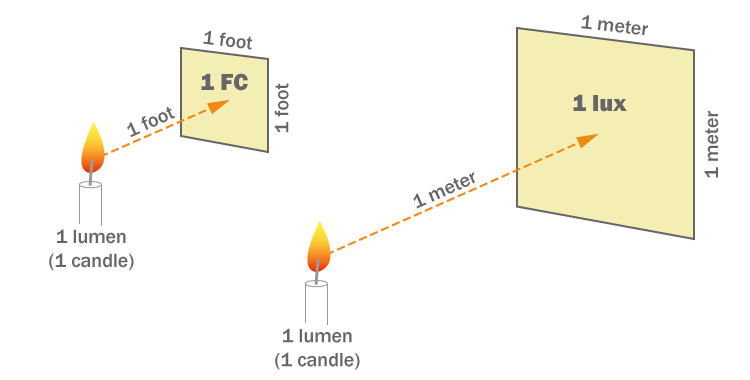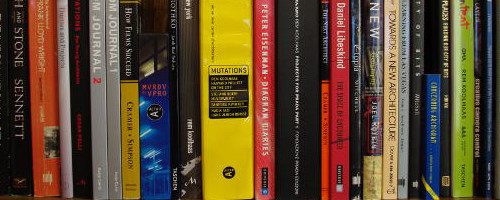Lighting in our living and workplaces is critically important for our ability to accomplish tasks efficiently and safely. In addition, proper light levels prevent eye strain, which allows us to work comfortably for longer periods of time. This article covers proper lighting levels and will include various lighting concepts during the conversation. If you need to brush up on the basics of lighting, check out our Properties of Light article.
While intensity of light is important for reducing eye strain, architects and designers must also consider color temperature. Temperature affects human alertness — humans are more alert under the blue light of midday and more relaxed under the warmer light of morning and evening. We cover light temperature in out article about circadian lighting.
There are two main concepts that architects need to understand when planning lighting levels in their buildings: Light Levels and Lighting Power Density.
Light Levels in Buildings
Since we are concerned mainly with accomplishing tasks in our buildings, we need to understand the Illuminance, or the amount of light that is hitting a surface. In an office, we might want to understand the amount of light that is hitting our desk; however, in a gymnasium or corridor we may be more interested in the amount of light hitting the floor.
Illuminance is measured in foot candles (FC) or lux. 1 FC is the amount of light that hits a 1 square foot surface when 1 lumen is shined from 1 foot away – this equates to 1 lumen per square foot. 1 lux is the amount of light that hits a 1 square meter surface when 1 lumen is shined from 1 meter away – this equates to 1 lumen per square meter. 10 lux is roughly 1 FC.

We need to provide enough light to allow people to accomplish see their tasks, but not so much light that it is hard to see the tasks – over lighting is just as bad as under lighting. Detailed tasks like drafting require more light, while general tasks like walking can be accomplished with less light.
The most cited reference for lighting levels is the IESNA Lighting Handbook, which is published by the Illuminating Engineering Society. The lighting levels listed below come from the Handbook as well as various other lighting references.
Lighting Power Density (LPD)
Lighting power density is the amount of power used by lighting per unit of building area. In the United States, LPD is measured in watts per square foot. Included in the watt measurement is all power consumed by light fixtures, ballasts, controls, transformers, etc. – essentially, if the component or device is involved in lighting, it must be included in the calculation.
Lighting power density is established by local and international codes. The values listed below for LPD come from the 2021 version of the International Energy Conservation Code (IECC 2021) and are based on the Space-By-Space method of calculation. Please keep in mind that certain cities or states may have codes that require LPDs to be a certain percentage BELOW the IECC and that different jurisdictions use different versions of the code. Always make sure to check your local codes before establishing LPD criteria for your project.
There are two ways to calculate the lighting power density. The first way is to use an LPD that applies to the full building based on the type of building (school, museum, office, etc.) -- this method is very basic and is called the Building Area Method. The second way is to calculate the LPD based on each specific room and is called the Space-by-Space method -- this method is much more accurate and may result in a lower LPD number, which is helpful when applying for utility incentives.
Many utility incentive programs require the design team to improve upon the lighting power density baseline required by local codes. For instance, a utility incentive program may require a 15% (or more) improvement over the baseline LPD in order to receive a lower electricity rate.
Recommended Light Levels by Space
The table below provides recommended light levels from the IESNA Lighting Handbook and LPD levels from the IECC 2021 (using the Space-By-Space Method for calculations). Check your local jurisdiction for other or more stringent requirements. The US General Services Administration provides lighting levels and LPDs for US Government buildings, which can be used as a guide for other types of buildings. The LPD levels should continue to drop with subsequent codes and as LED lighting becomes more energy efficient.
The required light levels are indicated in a range because different tasks, even in the same space, require different amounts of light. In general, low contrast and detailed tasks require more light while high contrast and less detailed tasks require less light.
Please keep in mind that this chart is not comprehensive. The IESNA Lighting Handbook has pages and pages of various categories. If you have a very specific need, we recommend further research.
| ROOM TYPE | LIGHT LEVEL (FOOT CANDLES) | LIGHT LEVEL (LUX) | IECC 2021 LIGHTING POWER DENSITY (WATTS PER SF) |
|---|---|---|---|
| Cafeteria - Eating | 20-30 FC | 200-300 lux | 0.40 |
| Classroom - General | 30-50 FC | 300-500 lux | 0.71 |
| Conference Room | 30-50 FC | 300-500 lux | 0.97 |
| Corridor - General | 5-10 FC | 50-100 lux | 0.41 |
| Corridor - Hospital | 5-10 FC | 50-100 lux | 0.71 |
| Dormitory - Living Quarters | 20-30 FC | 200-300 lux | 0.50 |
| Exhibit Space (Museum) | 30-50 FC | 300-500 lux | 0.31 |
| Gymnasium - Exercise / Workout | 20-30 FC | 200-300 lux | 0.90 |
| Gymnasium - Sports / Games | 30-50 FC | 300-500 lux | 0.85 |
| Kitchen / Food Prep | 30-75 FC | 300-750 lux | 1.09 |
| Laboratory (Classroom) | 50-75 FC | 500-750 lux | 1.11 |
| Laboratory (Professional) | 75-120 FC | 750-1200 lux | 1.33 |
| Library - Stacks | 20-50 FC | 200-500 lux | 1.18 |
| Library - Reading / Studying | 30-50 FC | 300-500 lux | 0.96 |
| Loading Dock | 10-30 FC | 100-300 lux | 0.88 |
| Lobby - Office/General | 20-30 FC | 200-300 lux | 0.84 |
| Locker Room | 10-30 FC | 100-300 lux | 0.52 |
| Lounge / Breakroom | 10-30 FC | 100-300 lux | 0.59 |
| Mechanical / Electrical Room | 20-50 FC | 200-500 lux | 0.43 |
| Office - Open | 30-50 FC | 300-500 lux | 0.61 |
| Office - Private / Closed | 30-50 FC | 300-500 lux | 0.74 |
| Parking - Interior | 5-10 FC | 50-100 lux | 0.15 |
| Restroom / Toilet | 10-30 FC | 100-300 lux | 0.63 |
| Retail Sales | 20-50 FC | 200-500 lux | 1.05 |
| Stairway | 5-10 FC | 50-100 lux | 0.49 |
| Storage Room - General | 5-20 FC | 50-200 lux | 0.38 |
| Workshop | 30-75 FC | 300-750 lux | 1.26 |


